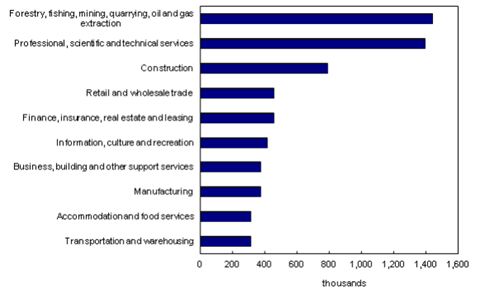When catastrophic flooding occurs, normal economic activity is severely disrupted. For example, in the Southern Alberta June 2013 flood, businesses along the Bow, Elbow, Highwood, and Oldman Rivers, as well as local tributaries, were forced to shut down and evacuate. Southern Alberta’s largest city centre, downtown Calgary, was forced to shut down for nearly one week in order for flood waters to recede and for the area to be considered safe for re-entry. While many Albertans were able to continue working remotely or from home, many industries, such as the service industry, were unable to work from home, resulting in lost revenue and wages. Analysis from Statistics Canada found that in the final two weeks of June, approximately 300,000 Albertans (13.5% of the employed population in Alberta) lost 7.5 million hours of work [8]. Total hours lost by each industry is shown below [9]

We provide Canadian educational resources on water practices to promote conservation and sustainability. Our team crafts current and relevant content, while encouraging feedback and engagement.
The Canada WaterPortal is a registered charity, #807121876RR0001
We recognize and respect the sovereignty of the Indigenous Peoples and communities on whose land our work takes place.
© 2025 All Rights Reserved.